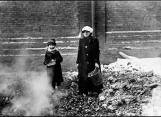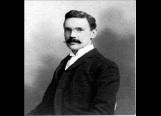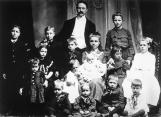1
Obviously, changes were badly needed.The key leader behind the establishment of social services in early Toronto was John Joseph Kelso, an immigrant from Ireland who had experienced poverty himself growing up in Toronto. Later, as a crime reporter, then newspaper editor for the Globe, he had written in the 1880s about the hardships faced by poor children, the sick, the aged, and the newcomer to Toronto.
Kelso was appointed 'Superintendent for Dependent and Neglected Children', and invited by Premier Sir Oliver Mowat to administer the Children's Protective Act passed in the Ontario Legislature in 1893. Kelso had studied earlier examples of settlement work in London, England and in Chicago and was convinced of the value of a neighbourhood settlement house for those living in the downtown Toronto slums. Kelso wrote, "(I was) greatly impressed with the value of the neighbourhood Settlement House as a preventive and corrective social agency, and as an inspirational centre for the residents of the district. From then on I was determined to bring about settlement work in Toronto, but it was not easy to demonstrate the need."
Indeed.
William Lyon Mackenzie King, while Deputy Minister of Labour, favoured religious zeal over ethical passion and felt it improper and premature to promote the settlement movement in Toronto or anywhere else in Canada. Settlements set up on a religious foundation were still favoured. Reverend E.B. Horne in his report to the special Committee of Knox College articulated this, "The Social Settlement seeks to harmonize and civilize; this is good, but it is not enough for our purposes. We must seek also definitely to Christianize. We are going into this work not merely inspired by a thin, sentimental humanism, but also a positive, definite, aggressive, evangelistic, propaganda."
Influenced by the politics of the day, Kelso put off this dream until he was approached by Arthur Burnett and George Bryce early in 1911.
3
J. J. Kelso, co-founder of Central Neighbourhood House1910s
Toronto, Ontario, Canada
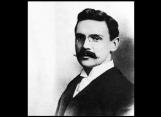 Credits:
Credits:Toronto Humane Society
4
Harsh winter living conditions in The Ward by Arthur Goss1912
The Ward, Toronto
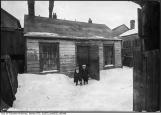 Credits:
Credits:City of Toronto Archives, 372-32-40
5
Five children pose for photographer Arthur Goss in their cramped Ward home1913
The Ward, Toronto
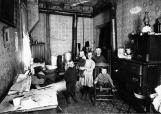 Credits:
Credits:City of Toronto Archives, 372-32-246
6
An exhausted newsboy catches some sleep1910s
Downtown Toronto
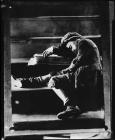 Credits:
Credits:City of Toronto Archives, 1257-1948
7
Mother and children on rear steps of a Ward house by Arthur Goss1914
The Ward, Toronto
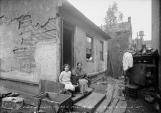 Credits:
Credits:City of Toronto Archives, 372-32-326
9
Kelso was appointed 'Superintendent for Dependent and Neglected Children', and invited by Premier Sir Oliver Mowat to administer the Children's Protective Act passed in the Ontario Legislature in 1893. Kelso had studied earlier examples of settlement work in London, England and in Chicago and was convinced of the value of a neighbourhood settlement house for those living in the downtown Toronto slums. Kelso wrote, "(I was) greatly impressed with the value of the neighbourhood Settlement House as a preventive and corrective social agency, and as an inspirational centre for the residents of the district. From then on I was determined to bring about settlement work in Toronto, but it was not easy to demonstrate the need."Indeed.
11
Italian family in The Ward by Arthur Goss1913
The Ward, Toronto
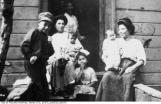 Credits:
Credits:City of Toronto Archives, 372-32-879
12
J. J. Kelso with kids from the Children's Aid Society1910s
Downtown Toronto
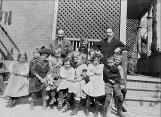 Credits:
Credits:Central Neighbourhood House Records
13
Newspaper clippings featuring J. J. Kelso, Superintendant for Dependent and Neglected Children1890-1915
Downtown Toronto
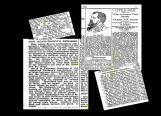 Credits:
Credits:Central Neighbourhood House Records
14
Future Prime Minister William Lyon Mackenzie King, while Deputy Minister of Labour, favoured religious zeal over ethical passion and felt it improper and premature to promote the settlement movement in Toronto or anywhere else in Canada. Settlements set up on a religious foundation were still favoured. Reverend E.B. Horne in his report to the special Committee of Knox College articulated this, "The Social Settlement seeks to harmonize and civilize; this is good, but it is not enough for our purposes. We must seek also definitely to Christianize. We are going into this work not merely inspired by a thin, sentimental humanism, but also a positive, definite, aggressive, evangelistic, propaganda."Influenced by the politics of the day, Kelso put off this dream until he was approached by Arthur Burnett and George Bryce early in 1911.
